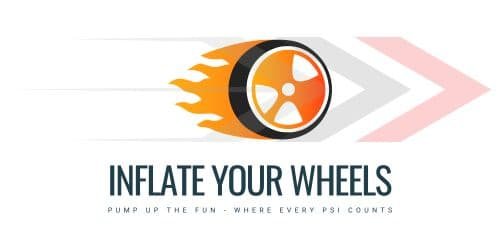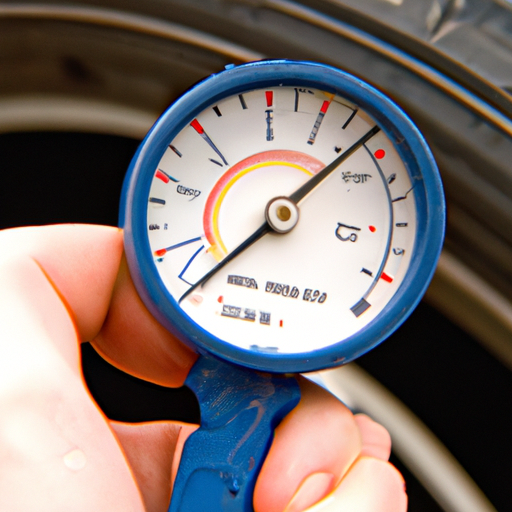Are you constantly wondering if you’ve put enough air in your tires? We’ve all been there. Figuring out the optimal tire pressure can sometimes feel like a guessing game. But fear not, because in this article, we will equip you with some practical tips and tricks to help you determine if you have enough air in your tires. Say goodbye to uncertainty and hello to a smoother ride!
How Do I Know If I Put Enough Air In My Tires?
Table of Contents
Understanding the Importance of Proper Tire Inflation
When it comes to maintaining our vehicles, one often overlooked aspect is tire inflation. Properly inflating our tires is not only essential for our safety, but it also plays a significant role in ensuring optimal vehicle performance and fuel efficiency. Many drivers might wonder, “How do I know if I put enough air in my tires?” Fortunately, there are several indicators and methods we can use to determine if our tires have the appropriate amount of air.
Determining the Recommended Tire Pressure
Before delving into the various methods of checking tire pressure, it’s crucial to understand the recommended tire pressure for your specific vehicle. The ideal tire pressure can vary depending on the make, model, and year of your car, as well as the type of tires you have. Fortunately, determining the correct tire pressure is relatively easy.
You can find the recommended PSI (pounds per square inch) value in your vehicle’s owner’s manual or on a placard located in the driver’s side door jamb or glove compartment. It’s important to note that the front and rear tires may have different recommended pressures, so be sure to check both.
Checking the Tire Pressure with a Tire Gauge
The most common method of checking tire pressure is by using a tire gauge. This simple tool allows you to measure the amount of air inside your tires accurately. To use a tire gauge, follow these steps:
- Unscrew the valve cap from the tire.
- Press the tire gauge firmly onto the valve stem until you hear a hissing noise.
- Read the measurement on the gauge. It should display the PSI value of the tire’s air pressure.
- Compare the measured PSI to the recommended tire pressure. If it aligns, you have enough air in your tires. If it’s lower, you need to add air.
Remember to check the pressure of all four tires, including the spare tire. Additionally, it’s best to measure tire pressure when the tires are cold. This means that the vehicle has been parked for at least three hours or driven for less than a mile at moderate speed.
Inspecting the Tire Sidewall for Recommended Pressure
In some cases, you may not have immediate access to a tire gauge or the recommended tire pressure information. In those instances, you can refer to the tire’s sidewall for a general idea of the recommended pressure. The sidewall of your tire contains various numbers and letters, but the most relevant information for this purpose is the tire’s maximum PSI rating. While this value may not precisely match the recommended pressure for your specific vehicle, it can serve as a useful guideline if you find yourself in a pinch.
Utilizing the Electronic Tire Pressure Monitoring System (TPMS)
Many modern vehicles are equipped with a Tire Pressure Monitoring System (TPMS). TPMS is an electronic system that monitors the air pressure in each of the tires and alerts the driver if any tire’s pressure falls below the recommended level. In such cases, a warning light will illuminate on the dashboard, indicating that the tire(s) need attention. If your vehicle is equipped with TPMS, it is essential to familiarize yourself with the specific warning indications and how the system operates. Keep in mind that the TPMS is not a substitute for regular tire maintenance, and it’s still recommended to manually check the tire pressure periodically.
Considering Temperature and Altitude Factors
It’s important to remember that tire pressure can be influenced by factors such as temperature and altitude. As the temperature drops, so does the tire pressure, while it increases as the temperature rises. In colder climates, it’s common for tire pressure to decrease during the winter months, and consequently, it’s essential to monitor and adjust the air pressure accordingly. Additionally, if you regularly drive at higher altitudes, it’s worth noting that the atmospheric pressure decreases as altitude increases. This means that your tire pressure may need to be adjusted to compensate for the lower atmospheric pressure. Be sure to consult your owner’s manual or a professional mechanic to determine the appropriate pressure adjustments for varying temperatures and altitudes.
Examining Tire Wear Patterns
Another way to assess if you’ve put enough air in your tires is by examining the wear patterns. Improper tire inflation can lead to uneven wear, which can be indicative of under or overinflated tires. If you notice excessive wear on the center or outer edges of the tire, it may suggest overinflation. On the other hand, if the treads appear to wear predominantly on the inner edges, underinflation might be the culprit. While tire wear patterns can provide valuable insights, it’s important to consider other factors such as alignment issues or suspension problems that may contribute to uneven wear.
Assessing the Handling and Ride Comfort
Properly inflated tires contribute to better handling and ride comfort. If you find that your vehicle’s handling feels off or the ride is rough and bumpy, it could be an indication of inadequate tire pressure. Underinflated tires can lead to sluggish responsiveness, reduced maneuverability, and increased stopping distance. Conversely, overinflated tires can decrease traction, compromising the vehicle’s ability to grip the road and potentially leading to a harsher ride. By paying close attention to how your vehicle handles and the overall comfort level of your ride, you can determine if your tire pressure needs adjustment.
Performing the Pencil Test
The pencil test is a simple method to determine if your tire tread depth is adequate. While not directly related to tire pressure, it is a useful tool to ensure optimal tire performance. To perform the pencil test, take a regular pencil and hold it with the eraser against the tread blocks on your tire. If the tread covers the top of the eraser, your tires likely have sufficient tread depth. However, if the tread is level with or below the eraser, it’s a sign that your tires may require maintenance or replacement. Maintaining proper tire pressure is crucial for preserving tire tread, and conducting the pencil test regularly can help you stay informed about your tire’s condition.
Consulting a Professional Mechanic
If you’re uncertain about the tire pressure or want an expert opinion, it’s always a good idea to consult a professional mechanic. They have the knowledge, experience, and specialized tools to accurately assess and adjust your tire pressure. A mechanic can provide you with personalized recommendations based on your vehicle’s specific requirements and conditions. Regular visits to a mechanic for tire maintenance can ensure that your tires are properly inflated and that any potential issues can be addressed promptly, allowing you to enjoy a safe and comfortable driving experience.
In conclusion, understanding if we have put enough air in our tires is crucial for the overall performance, safety, and fuel efficiency of our vehicles. By determining the recommended tire pressure, utilizing a tire gauge, inspecting the tire sidewall, and leveraging technologies like TPMS, we can stay informed about our tire pressure. Additionally, considering temperature and altitude factors, examining tire wear patterns, assessing handling and ride comfort, performing the pencil test, and seeking professional advice are valuable steps in ensuring our tires are adequately inflated. By prioritizing proper tire inflation, we can enhance our driving experience while promoting safety and prolonging the lifespan of our tires.


Keep your car tires in peak condition with the right inflator.
Discovering the best tire inflator can be a game-changer for maintaining your vehicle. Explore our comprehensive Ultimate Guide to the Best Tire Inflators to make an informed decision.

